Having had enough of the city and the Khmer Rouge, we went off to the south for a few days while we waited for the Indian Government to decide if we were the worthy sort of people to whom they would grant a tourist visa. We took a bus for the 130Km, four hour journey, to Kep.
Kep-sur-Mer was founded as a retreat for the colonial French elite in 1908. Famed for its spectacular sunsets and splendid seafood, it survived as a weekend retreat for the wealthy of Phnom Penh until the Khmer Rouge came along and evacuated the inhabitants and looted every building. Today, some of the old French villas have been brought back to life as guesthouses but many remain blackened shells, relics of a genteel past that met a sudden and violent end.
To be honest, Kep is hardly recognizable as a village. Its centre is a bus stop, not far from the beach, that is surrounded by a few optimistic locals selling drinks and cigarettes. The remainder of Kep is made up of a small number of guesthouses that are spread out along the road to Kampot, the nearest town, and a string of seafood restaurants, known as the ‘Crab Market’, hidden behind some ramshackle old buildings. Kep claims a population of 10,000 but this must include dogs, cats, buffalo and bicycles because I would estimate the place holds no more than a couple of hundred souls.
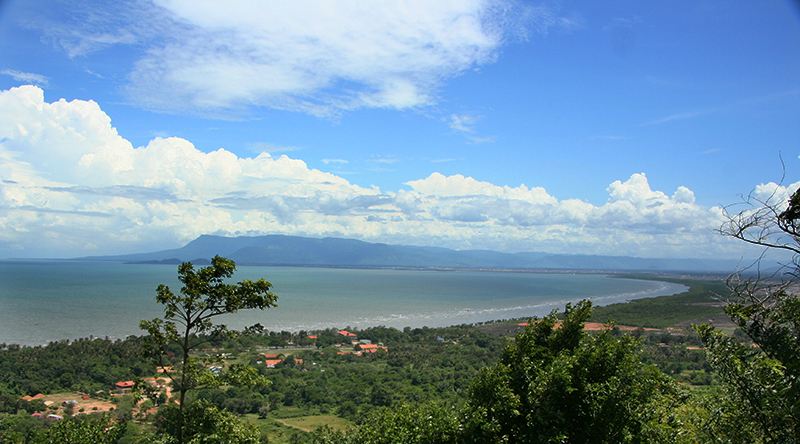 Unsurprisingly, there is not much to do. We made an enjoyable two hour jungle trek around Sunset Hill that afforded us occasional views through the foliage out across the flat countryside. We could clearly see the town of Kampot 25 Km away to the west, the Vietnamese island of Phu Quoc 40 Km to the south and the limestone karsts 30 Km to the north east. We could even see the casino in the town of Neak Leung inside Vietnam. It seems that just about the whole of Cambodia is one flat plain interspersed with a few dimply hills. The walk took us through sheltered glades of creeper infested trees and a cool sea breeze kept the sweat factor down to 8 out of 10. We made it back to our lodgings just before the breeze strengthened into strong, angry winds that heralded the arrival of rain. Midday rain is a weather pattern repeated every day around 1.00pm – we could almost set our watch by it.
Unsurprisingly, there is not much to do. We made an enjoyable two hour jungle trek around Sunset Hill that afforded us occasional views through the foliage out across the flat countryside. We could clearly see the town of Kampot 25 Km away to the west, the Vietnamese island of Phu Quoc 40 Km to the south and the limestone karsts 30 Km to the north east. We could even see the casino in the town of Neak Leung inside Vietnam. It seems that just about the whole of Cambodia is one flat plain interspersed with a few dimply hills. The walk took us through sheltered glades of creeper infested trees and a cool sea breeze kept the sweat factor down to 8 out of 10. We made it back to our lodgings just before the breeze strengthened into strong, angry winds that heralded the arrival of rain. Midday rain is a weather pattern repeated every day around 1.00pm – we could almost set our watch by it.
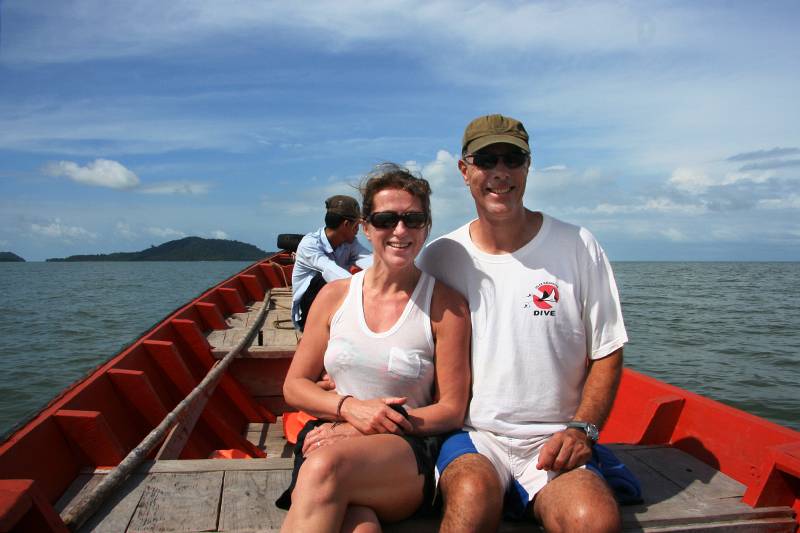 We also took a boat out to Koh Tansay or Rabbit Island that was 20 minutes off the coast. It has a glorious sandy beach with shallow water that is warmer than the shower in our room. There are a few little bar/restaurant establishments that sell food and beer at prices even cheaper than the mainland (US$8 for 4 beers and two large bowls of food). If you are brave enough, it is possible to stay overnight in one of the little stilted huts that have four straw walls, an open door and a mat on the floor. The perfect place to sleep off a bowl of spicy seafood and too many bottles of Angkor Beer.
We also took a boat out to Koh Tansay or Rabbit Island that was 20 minutes off the coast. It has a glorious sandy beach with shallow water that is warmer than the shower in our room. There are a few little bar/restaurant establishments that sell food and beer at prices even cheaper than the mainland (US$8 for 4 beers and two large bowls of food). If you are brave enough, it is possible to stay overnight in one of the little stilted huts that have four straw walls, an open door and a mat on the floor. The perfect place to sleep off a bowl of spicy seafood and too many bottles of Angkor Beer.
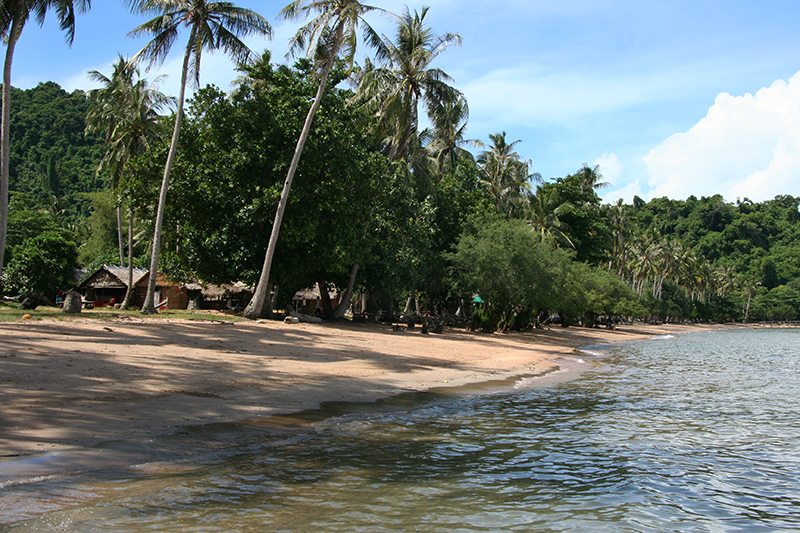 Apart from swimming and chilling out, the other attraction was a 2-3 hour walk around the island. Apparently no one bothered to do this, preferring the lazy attraction of the lovely beach. So we set off along a promising looking trail that twisted its way through the dense jungle. After a while, it became apparent why no one did this walk when the track stopped dead in front of thick foliage. Impenetrable jungle certainly was not going to defeat a couple of intrepid explorers and we pushed our way through it making enough noise (hopefully) to scare away the snakes, spiders and other assorted undesirable jungle creatures. I have to admit that it wasn’t fun. Half the time I was bent double, trying to negotiate a way between trees, branches and creepers. The other half of the time I was carefully extracting creeper barbs (which hurt!) from my skin and clothing. Even dainty Debbie could not avoid being cut and, I can tell you, there were a few choice words used of the kind that we hope the locals don’t understand.
Apart from swimming and chilling out, the other attraction was a 2-3 hour walk around the island. Apparently no one bothered to do this, preferring the lazy attraction of the lovely beach. So we set off along a promising looking trail that twisted its way through the dense jungle. After a while, it became apparent why no one did this walk when the track stopped dead in front of thick foliage. Impenetrable jungle certainly was not going to defeat a couple of intrepid explorers and we pushed our way through it making enough noise (hopefully) to scare away the snakes, spiders and other assorted undesirable jungle creatures. I have to admit that it wasn’t fun. Half the time I was bent double, trying to negotiate a way between trees, branches and creepers. The other half of the time I was carefully extracting creeper barbs (which hurt!) from my skin and clothing. Even dainty Debbie could not avoid being cut and, I can tell you, there were a few choice words used of the kind that we hope the locals don’t understand.
After an hour and a half we emerged dirty, sweaty and bleeding into a clearing where a few local fishermen were stowing away their nets. Between howls of laughter, they told us of a shortcut back across the centre of the island to the beach where we had started. It was just as well we bumped into them as the last boat back to the mainland left in 10 minutes and missing it meant spending a night on the island, eating a bowl of spicy seafood for dinner and drinking enough Angkor Beer that would make us oblivious to the mosquitoes that would eat us alive. Missing the boat would also mean that we would not get to see the England vs Germany match in the World Cup that, in a triumph of hope over inevitability, I wanted to watch.
Just ahead of the rains and storm we clambered on to the last boat of the day. The driver was drunk. He pulled continuously for five minutes on the starter cord but the engine refused to fire. He then looked at it with great suspicion and not a little irritation until he noticed, with a look of happy enlightenment, that the spark plug lead was detached. He carefully forced it back on and began pulling vigorously on the starter cord again. On the third attempt he failed to engage the engine, losing his balance and waving his hands wildly above his head in an effort to bring his body under control. He looked like an octopus falling out of a tree. He grabbed at the motor in a vain attempt to remain upright before he collapsed into the bottom of the boat holding a length a black wire torn from the engine. Things didn’t look good. Ten minutes passed whilst, while swaying around (though the boat was steady), he stripped the plastic coating from the wire with his teeth and wound it back into position. A cheer arose from the 9 passengers as the engine burst into life at the first pull and the boat began to cut through the water before power was lost once more. Further investigation revealed that there was no petrol in the motor. A can of fuel was produced with the flourish of a magician pulling a rabbit from a hat. Most of the contents of the fuel can were lost over the engine and I imagined that the next episode in the catalogue of failure would be the engine and boat catching fire. But in a miracle of biblical proportions, the engine sprung into life and we set off for the mainland.
The channel had become pretty rough by now and, in a display of woefully incompetent seamanship, our driver took the white crested waves at precisely the right angle to soak all his passengers. Water poured over the gunwales and drenched everyone, gradually filling the little craft with murky seawater. Nobody minded when our exciting little journey came to an abrupt end with a headlong crash into the pier. We all scampered thankfully off the boat back onto terra firma muttering little prayers of thanks to our gods.
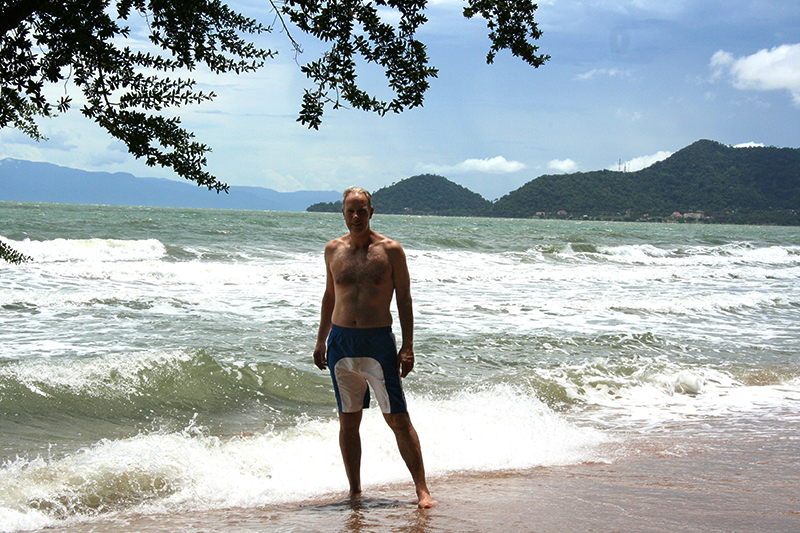 That evening we celebrated remaining amongst the living with a delicious dinner of fresh crab baked in the world famous Kaput pepper washed down with an undistinguished local white wine. We followed dinner with the (now familiar) torture of watching England end their feeble World Cup campaign by being walloped by arch rivals Germany. Frankly, a team that included both me and the school dog would have done better. I have, therefore, devised a team that, apart from some minor nationality issues, would be world beaters:
That evening we celebrated remaining amongst the living with a delicious dinner of fresh crab baked in the world famous Kaput pepper washed down with an undistinguished local white wine. We followed dinner with the (now familiar) torture of watching England end their feeble World Cup campaign by being walloped by arch rivals Germany. Frankly, a team that included both me and the school dog would have done better. I have, therefore, devised a team that, apart from some minor nationality issues, would be world beaters:
Goal: Goliath
Defense: Ulysses, Davie Crockett, the bloke who held Rouke’s Drift, King Harold
Holding midfield: School Dog
Midfield: Socrates, Plato, Michelangelo
Attack: Francis Drake, Me
Manager: Churchill
Ref: Solomon
4th Official: Nelson
What can go wrong?
The obvious weakness in the team is the school dog who would probably get sent off for physical assault in the first ten minutes. Having thought carefully about this, there are two solutions to the problem: one would be to promote Nelson to referee. He could turn a blind eye to the misdemeanors of School Dog. However, School Dog may have eaten the entire opposition, including substitutes, before half time. Therefore, no result would be recorded. Not ideal.
The second solution would be to bring in ‘Chopper’ Harris of Chelsea 1970s fame in Dog’s place. Chopper would kick everything that moved above grass level: his philosophy was ‘if it moves, kick it. If it doesn’t, kick it until it does’. I can still remember how Chopper dealt with Stan Bowles of Queen’s Park Rangers. He nullified the goal threat that Bowles provided for his team by splattering him all over the stands. It only took 15 minutes. Of course, in those days, a certain amount of hacking was tolerated, even encouraged, during a time when football was played by men rather than chavs with bouffant hair styles.
I am seriously considering sending my thoughts direct to the English Football Association. I can already imagine myself being carried aloft through the streets of London following a triumphant World Cup campaign in Brazil in 2014.

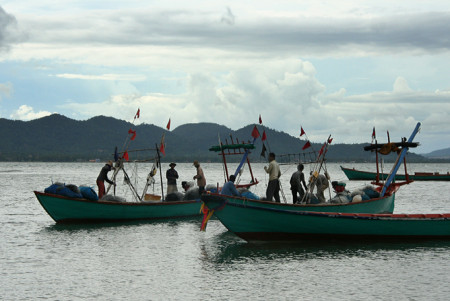
No comments yet.